You’ve surely heard a lot about Hanoi – the capital city over 1000 years old. Not only famous for its ancient history, rich cultural heritage, and traditional ethnic culture, this region is also known as one of the attractions for many tourists from both within and outside the country. With this introduction to Hanoi, you will definitely fall in love with the things it has to offer, from culture, customs, and traditions, people, way of life, to landscapes and the alluring culinary scene that is incomparable anywhere else.
Table of Contents
Introduction to Hanoi – Location and Climate Characteristics.
Hanoi is situated on the left bank of the Red River and on both sides of the Red River Delta. It shares its northern border with Vinh Phuc and Thai Nguyen provinces, its southern border with Hoa Binh province, its eastern border with Bac Ninh and Hung Yen provinces, and its western border with Vinh Phuc province. After its expansion, Hanoi is among the top 17 largest capital cities in the world with an area of 3,324.92 km2. With this advantageous geographical location, the city easily becomes a crucial economic, political, cultural, and scientific center of the country. Currently, it comprises 12 districts, 1 town, and 17 rural districts.
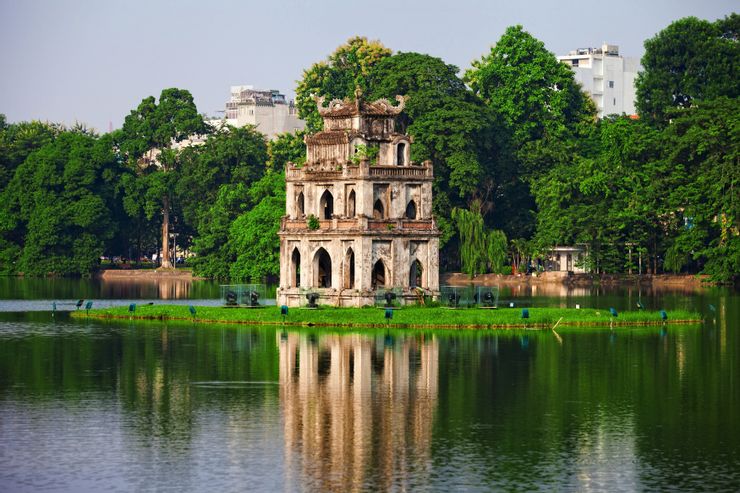
Due to its humid subtropical climate with distinct seasons, visiting Hanoi allows you to experience all four seasons throughout the year. Each season has its unique characteristics, providing different sensations about life, landscapes, and the people here. Hanoi can be quite cold in winter and very hot in summer, yet its beauty remains intact. However, perhaps the most exceptional are the spring and autumn seasons in Hanoi.
Introduction to Hanoi – Things You Might Not Know.
From the time it was still called the Imperial Citadel of Thang Long to the present, Hanoi has remained the largest cultural center of the entire country. This region has given birth to a folk culture with numerous legends, folk songs, proverbs, various folk festivals, and even celebrated heroic figures, along with recognized cultural and tangible heritage sites.
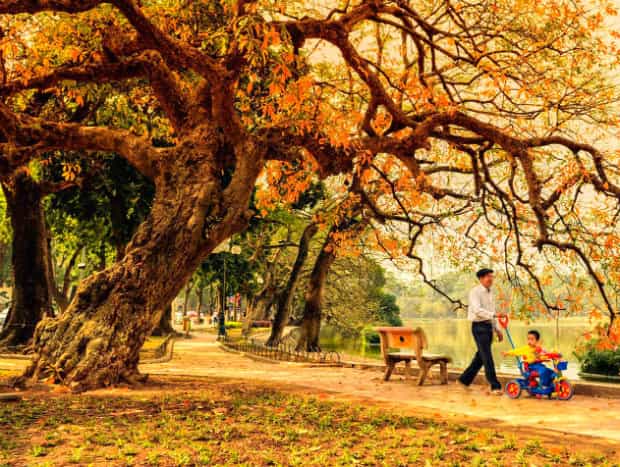
One distinctive aspect when introducing Hanoi is its rich blend of diverse cultures, with few places having as many ancient cultural villages as this city. Alongside these are villages with Buddhist, folk, and French architectural influences scattered throughout, captivating visitors as they explore a bustling, developed city like Hanoi that still preserves cultural values from a thousand years ago.
Hanoi’s Thousand-Year Traditions.
Hanoi’s traditions manifest in even the smallest aspects, from expressions of “thank you” and “excuse me” to forms of greeting and invitations. All have been unified within educational standards to foster affection among the people. These traditions are also reflected in traditional craft villages and bustling streets trading unique products like Bat Trang ceramics, Hang Ma Street, and Hang Bac Street.

Diverse Religions and Beliefs.
Religions and beliefs have long played an important role in the spiritual lives of Hanoians and Vietnamese people in general. This region encompasses numerous religions, including Buddhism, Daoism, Confucianism, Protestantism, Islam, and Cao Dai, catering to the cultural and spiritual needs of its residents.
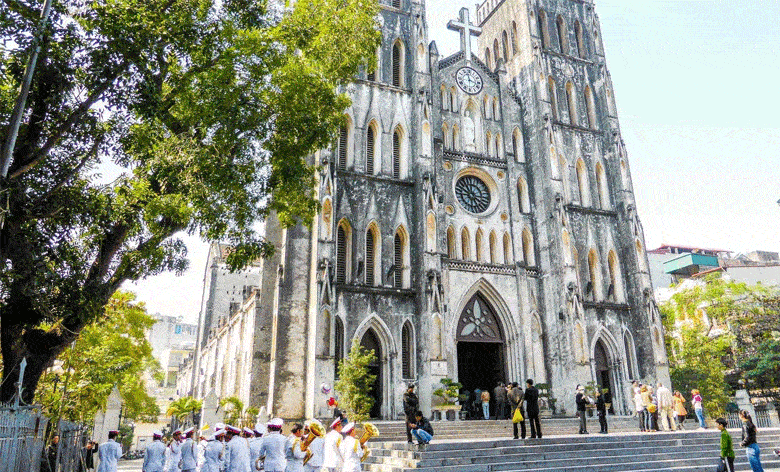
Life and People of Hanoi.
Every introduction to Hanoi inevitably touches upon its people. The essence of Hanoi resides in its compassionate individuals, reflected in their manner of speech, refined behavior, and courtesy. If you were to visit the capital city one day, you would experience the warmth of its people, ever ready to assist and guide you through the streets, transportation, dining options, and accommodations as a foreign traveler.
Amidst its thousand-year-old heritage and the tranquility of its old streets, Hanoi maintains an energetic atmosphere befitting a capital city. During the mornings, bustling crowds traverse the streets, particularly during peak hours. At night, Hanoi transforms into a serene, ancient, and brilliantly lit space.
Introduction to Hanoi – Famous Landmarks and Scenic Spots.
Ho Chi Minh Mausoleum.
The Ho Chi Minh Mausoleum is the resting place of Uncle Ho – the beloved father figure of the nation. The mausoleum’s construction began on September 2, 1973, and was completed on August 19, 1975. The structure is 21.6 meters high and 41.2 meters wide, entirely built using various rare types of stones. When viewed as a whole, the mausoleum resembles a stylized lotus flower. It has become a renowned destination that anyone visiting Hanoi wishes to explore. Visitors not only admire this unique architecture but also witness Uncle Ho in his eternal sleep.
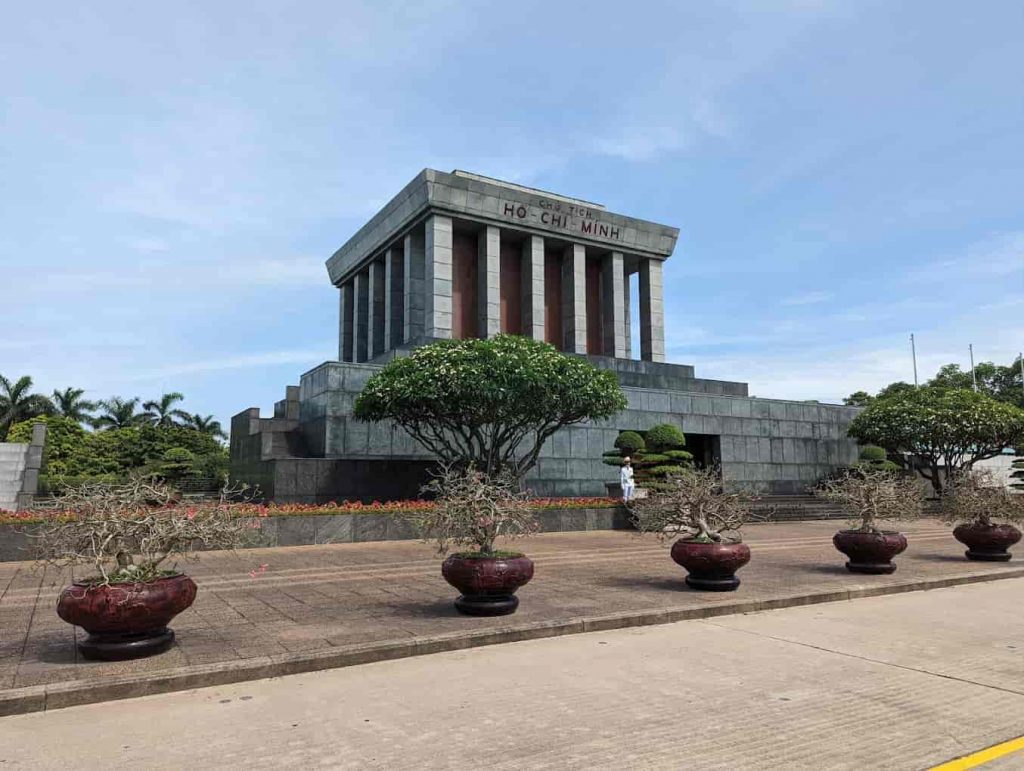
Temple of Literature – The First University of Southeast Asia.
This historic site was once the ancient school of the Thang Long Imperial Citadel and the first university in Southeast Asia. The Temple of Literature is not only a historical and cultural relic but also a place where vibrant activities and events showcasing the capital’s distinct identity take place. Inside, numerous precious artifacts are preserved, including the Dai Chung Bell, the Confucian wall with 82 doctoral laureates’ names, and more. If you’re a history enthusiast interested in Hanoi and eager to learn about ancient cultures, this is an ideal location.
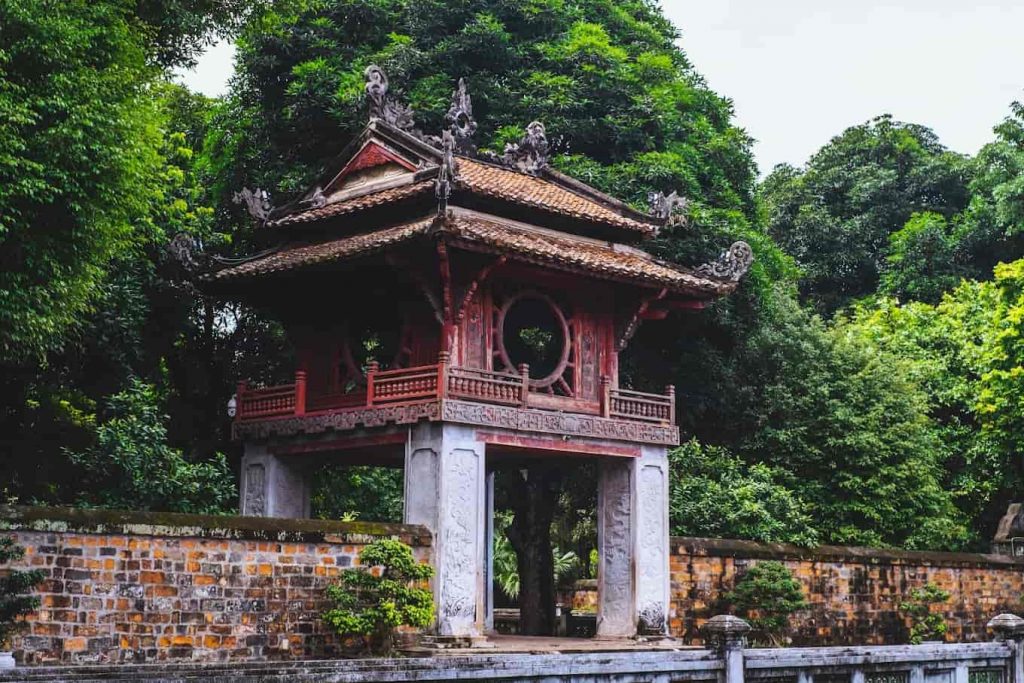
West Lake – Hanoi’s Reflecting Mirror.
With an area of over 500 hectares and a history spanning thousands of years, West Lake is a vital part of Hanoi’s charm. Along with Truc Bach Lake, West Lake contributes to the poetic essence of the city. In my opinion, taking a stroll around the lake allows you to explore various historic sites and scenic views. Villages like Nhat Tan, adorned with cherry blossoms in spring, Xuan Tao, with its shrine to Saint Giong, and the traditional paper-making village of Ke Buoi all offer diverse experiences. Additionally, several structures surrounding the lake enhance its variety.
Hoan Kiem Lake – The Serene Heart of the City.
Known as the “serene heart of the city,” Hoan Kiem Lake is surrounded by three roads: Ly Thai To, Dinh Tien Hoang, and Hang Khay, spanning about 1.8 kilometers. The clear water surface reflects the shade of ancient banyan trees, graceful willows, moss-covered pagodas, temples, and historic towers, alongside modern high-rise buildings. Here, you can take a leisurely walk around the lake, breathe in the fresh air, or simply find a spot to observe the rhythm of Hanoi life—a truly enjoyable experience.
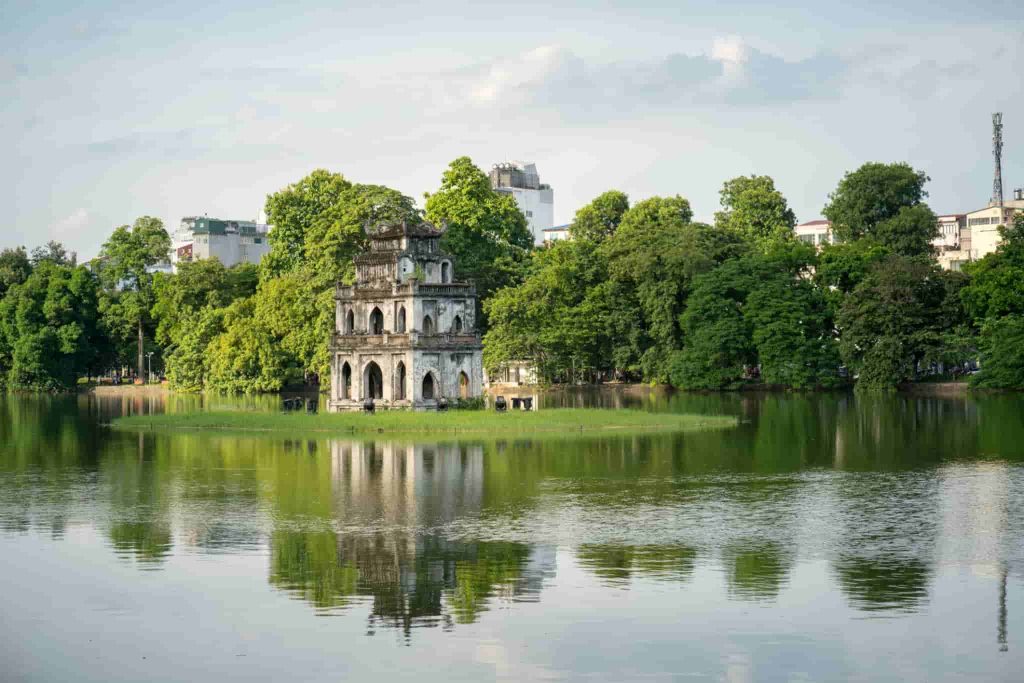
One Pillar Pagoda – The Most Unique Architecture.
When mentioning Hanoi, the image of the One Pillar Pagoda immediately comes to mind. This pagoda stands as an iconic attraction, drawing visitors with its distinctive architecture: a square-shaped pagoda with a curved roof, perched atop a stone pillar, which resembles a lotus blossom atop a pond. Despite its small size, the pagoda provides a way for you to climb up to the shrine and offer incense.
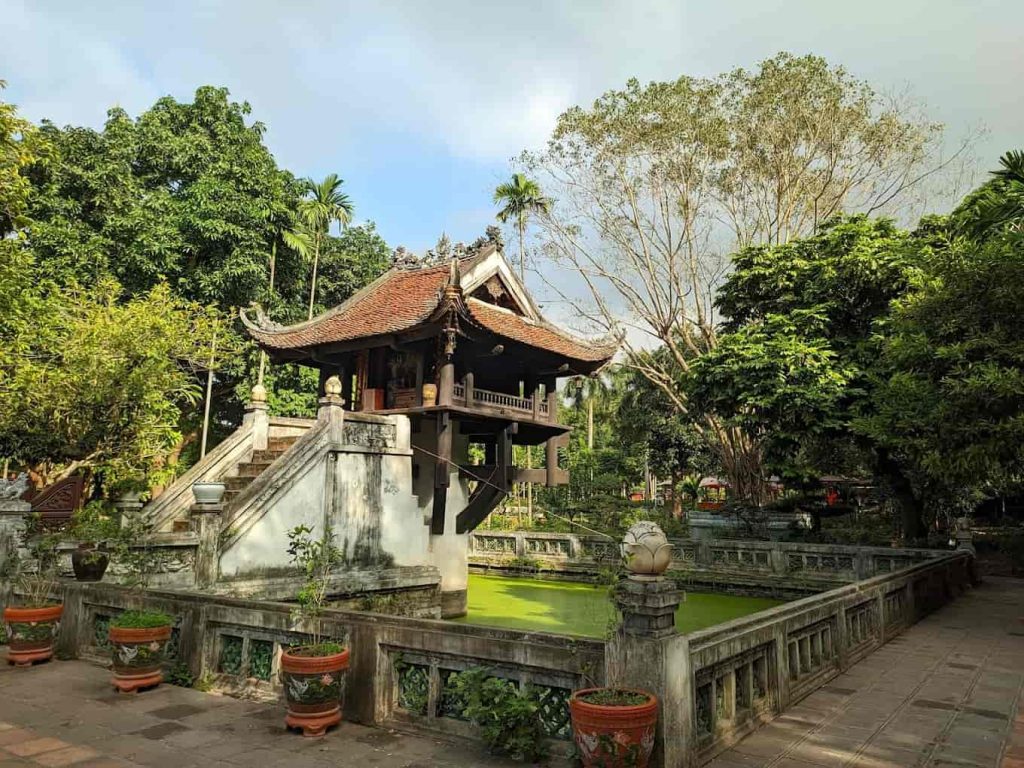
Hanoi’s Old Quarter – Where Time Hides.
The Hanoi Old Quarter – a unique ancient quarter in Vietnam – is located in Hoan Kiem District and has been compared by Western visitors to the ancient city of Venice. It’s also known as the “36 Streets” area, where each street was dedicated to a specific craft. The quarter preserves traditional houses, cultural and historical structures that showcase the architectural style of both Vietnamese and Asian cultures. The lively activities of daily life, trade, production, and entertainment create a vibrant atmosphere in the quarter.
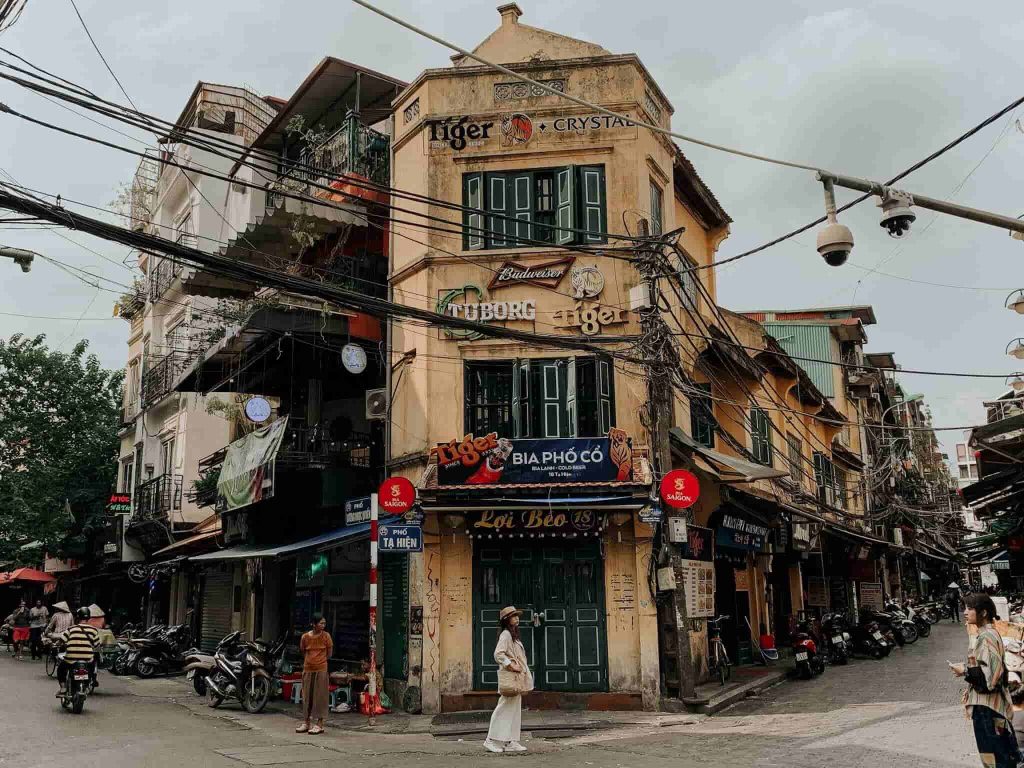
In addition to these landmarks, Hanoi tourism also includes Ngoc Son Temple, Kim Lien Temple, Hoa Phong Tower, Hanoi Old Citadel, Hanoi Flag Tower, Truc Bach Lake, Presidential Palace, Ba Dinh Square, Uncle Ho’s Stilt House, Hanoi Opera House, National Library, and more.
Introduction to Hanoi – A Culinary Landmark.
Not only Hue, but Hanoi’s cuisine also reflects sophistication and refinement. The dishes here are said to be unparalleled anywhere else. Hanoi’s cuisine has found its way into folk songs and proverbs, encompassing common family meals (such as spinach soup and mashed eggplant) to unique specialties like Lã Vọng fish cakes, Vòng Village green rice flakes, Thanh Trì steamed rice rolls, grilled pork vermicelli, beef pho, and more.

Lã Vọng Fish Cakes: Lã Vọng fish cakes have become a renowned delicacy of the capital city, prepared with meticulous craftsmanship. The cakes are made from lang fish, finely ground, marinated, and then grilled. To fully appreciate their flavor, they should be enjoyed while still hot, served with vermicelli, grilled rice paper, fresh herbs, roasted peanuts, sliced onions, and dipped in shrimp sauce.
Thanh Trì Steamed Rice Rolls: This is a simple, familiar dish that showcases the subtlety of Hanoians. The rice rolls are skillfully wrapped around a filling, typically served with cha (grilled pork), herbs, and dipping sauce.
Hanoi Grilled Pork Vermicelli (Bún Chả): A staple for locals and a dish that has garnered praise from both near and far due to its strong traditional flavor.
Pho: Perhaps the most iconic dish that cannot be left unmentioned – a culinary tradition passed down through generations. Hanoi pho comes in various types, including beef pho, chicken pho, stir-fried pho, rolled pho, each with its unique and enticing taste.
Vòng Village Green Rice Flakes (Cốm Làng Vòng): The refreshing green color and delicate fragrance of Vòng Village green rice flakes have created the allure of this dish, a treasured gift of Hanoians. If you have the chance to visit Hanoi, don’t miss the opportunity to savor it!
Hanoi’s culinary scene captures the essence of the city’s culture and history, providing a delightful experience for both locals and visitors alike.
Introduction to Hanoi – Independent Travel Tips.
With the factors mentioned above, Hanoi becomes an attractive destination that draws travelers from near and far, especially international visitors.
Best Time to Travel to Hanoi.
As mentioned, Hanoi has a humid subtropical climate. From May to September (summer), the weather is quite hot and rainy. From November to March of the following year (winter), the weather is cold and dry. In particular, the transition periods between these two seasons, around September to November or March to April, are considered the ideal times to visit Hanoi. During these periods, the weather is warm, mild, and not overly sunny.
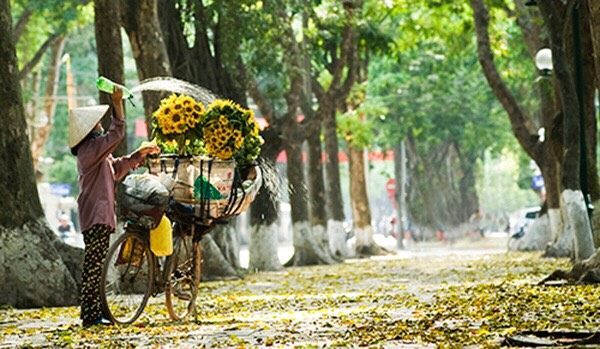
However, most people prefer autumn, with October being the most beautiful month. Towards the end of October, the weather becomes cooler, the streets are covered with golden fallen leaves, the sky is deep blue, the sun is gentle, and flowers are in full bloom, making it perfect for sightseeing and enjoying the scenery.
Getting to Hanoi.
Means of getting to Hanoi: If you are coming from a distant location and your budget allows, flying is a good option. Alternatively, taking a train is cost-effective and convenient for visiting places along the way. If you are from neighboring provinces not too far from Hanoi, you can choose to take a bus or ride a motorbike. In particular, motorbikes are a preferred option for many young people as they offer not only flexibility but also an exciting experience.
Getting around in Hanoi: Upon arriving in Hanoi, tourists can choose from several transportation options: motorbikes (rental price ranges from 200,000 to 300,000 VND per day, depending on the type of bike), taxis (but consider the higher cost), buses, and cyclos for the most budget-friendly travel.
Additionally, you can also opt to rent a private car with a driver in Hanoi from DanangPrivateCar.com’s. With a professional team of drivers and a range of vehicles from 4 to 46 seats for you to choose from, their experienced drivers have years of experience in international passenger transportation, ensuring you a safe, comfortable, and cost-effective trip.
Gaining a deeper understanding of Hanoi will undoubtedly provide you with a solid foundation to fully enjoy your travel experience in an easy and delightful manner. DanangPrivateCar.com’s hopes that through this introduction to Hanoi, you will develop an even greater affection for this land of a thousand years of culture and heritage.

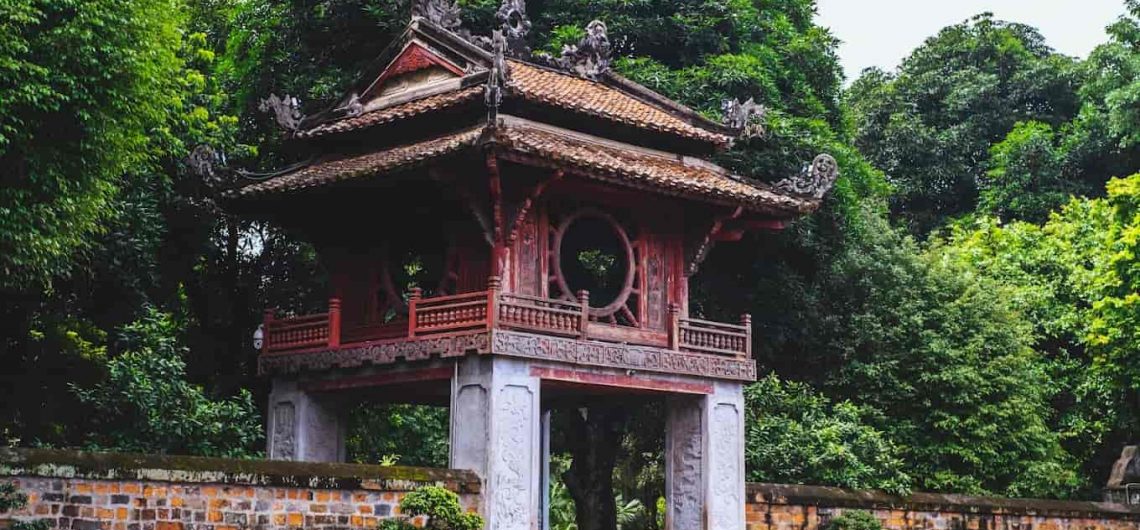
Comments